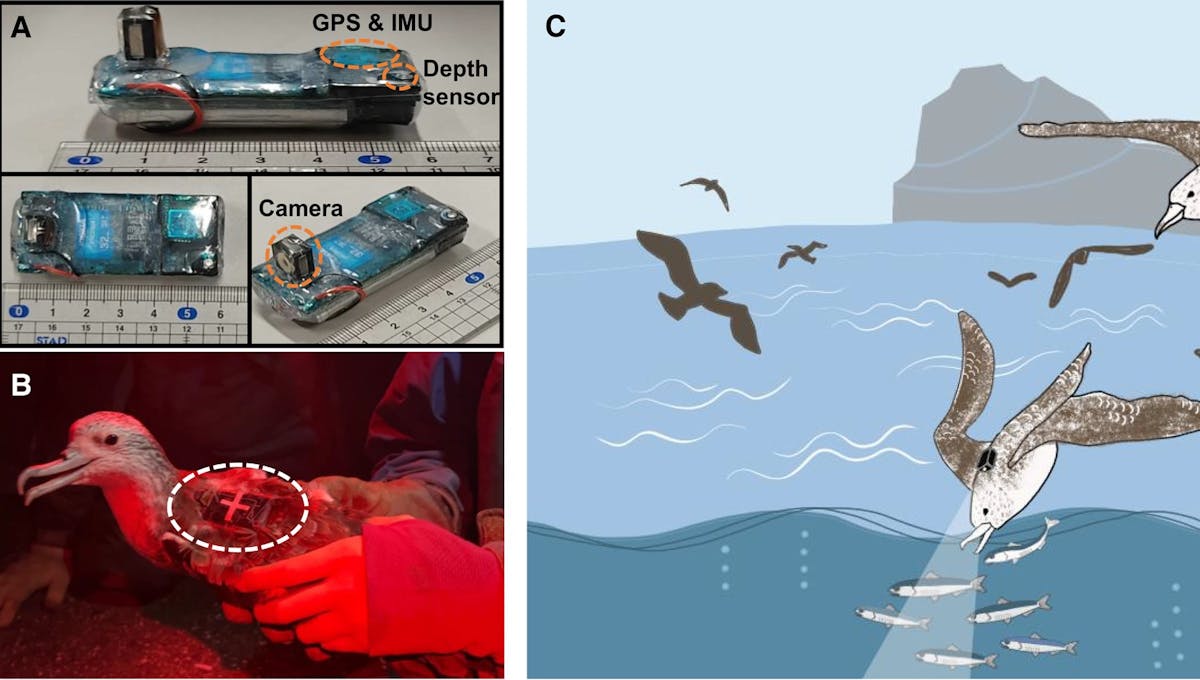The Secret Life of Animals
This unique biologger captures rare animal behaviors using low-power sensors and AI to keep energy-hungry sensors off until they are needed.

Scientists are very interested in observing infrequent behaviors of animals as they can be quite useful in generating new hypotheses in behavioral and ecological studies. But because these events may be exceedingly rare, direct observations might not be possible — or at least the number of observations may be far too small for statistical analyses. Moreover, the simple act of observing some animals can change their behavior, which can also have the effect of hindering the observation of infrequent behaviors.
With sensing, computing, and wireless communications hardware continuing to decrease in both size and energy consumption, researchers are increasingly turning to biologging devices to assist them in observing animal behavior. These biologgers can be attached to the animal, where they can collect information about location, movement, activities, and much more via their onboard sensors. Since these devices are minimally intrusive and no humans need to be present near the animals, they can be observed under natural conditions for long periods of time.

However, when it comes to rare behaviors, the onboard batteries may not have enough juice to capture anything especially noteworthy. The battery capacity must be kept to a minimum to avoid burdening the animal, after all. Cameras and computing units, in particular, draw substantial amounts of power and running them around the clock will drain a battery pretty quickly. For this reason, a team composed of researchers at Osaka University and Nagoya University in Japan have developed a novel type of biologger that leverages highly optimized AI algorithms to stretch out the system’s battery life. It does this by selectively turning on power-hungry components only when it looks like something of interest is about to happen.
While this technology could be applied to many animals, the team first focused on building a device that would be suitable for observing streaked shearwater seabirds. Weighing in at just 23 grams, the logger amounts to about 5% of the weight of a typical bird of this sort. Packed within this tiny package is a video camera, three-axis acceleration sensor, GPS unit, water pressure sensor, thermometer, magnetometer, illuminometer, microcontroller, 600 mAh battery, and more. This is plenty of equipment to capture some interesting data on the birds, but so far, it is a fairly typical biologger.
The team’s real innovation is centered around their system that keeps the energy-hungry components powered down until they are needed. This process relies on low-power sensors, like accelerometers, to look for anomalous behavior. The team hoped to use an isolation forest algorithm for this purpose, but as it turned out, this algorithm itself put too much strain on the available computing resources, causing them to draw too much power. To alleviate this problem, they leveraged the trained isolation forest algorithm as a “teacher” to train a much smaller “student” decision tree algorithm for outlier detection. And when an outlier is detected by this lightweight model, it immediately turns on the cameras and other sensors to capture the action.
An experiment was conducted in which 18 seabirds were equipped with biologging devices. In the course of the study, 205 hours of low-power sensor measurements were captured, but the outlier detection system was able to limit video capture to 76 five minute long videos. Even from just this small sample, the researchers were already able to identify novel head-shaking and foraging behaviors of the birds.
In the future, the team hopes to unlock further secrets of the natural world by deploying their system to uninhabited areas and extreme environments that are inaccessible to humans. They also plan to study the behavior of other animals, such as monkeys and penguins.
R&D, creativity, and building the next big thing you never knew you wanted are my specialties.

